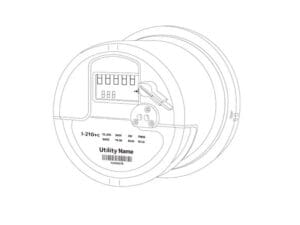
Power and utilities leaders can now make informed decisions by balancing the benefits of cloud adoption with the critical need for security and compliance.
To support the decision-making process, Microsoft has launched a guide on the North American Electric Reliability Corporation’s Critical Infrastructure Protection (NERC CIP) standards, which play a crucial role in ensuring the security and reliability of the electric grid.
Updates to NERC CIP guidelines
As of January 1, 2024, significant changes have been implemented, allowing the storage of medium- and high-impact Bulk Cyber System Information (BCSI) in the cloud, subject to specific requirements.
By embracing cloud technologies, while adhering to NERC CIP guidelines, power and utilities leaders can enhance operational efficiency, promote sustainability, and ensure grid reliability.
As the energy sector evolves, proactive engagement with NERC CIP standards will be pivotal in shaping a resilient and interconnected future.
- Cloud Adoption and Security
- The recent changes permit power companies to leverage cloud infrastructure for storing BCSI. While this opens up new possibilities for scalability and efficiency, it also introduces security challenges.
- Organizations must carefully evaluate cloud service providers, ensuring compliance with NERC CIP requirements. Robust encryption, access controls, and continuous monitoring are essential.
- Benefits of Cloud Adoption
- Cloud-based storage offers flexibility, enabling seamless data sharing across geographically dispersed teams. It promotes collaboration and accelerates decision-making.
- Scalability allows utilities to handle increasing data volumes, especially with the proliferation of smart meters and IoT devices.
- Cost savings result from reduced on-premises infrastructure maintenance and operational expenses.
- Challenges and Mitigation Strategies
- Security Concerns: Cloud adoption introduces potential vulnerabilities. Companies must implement robust authentication mechanisms, intrusion detection systems, and regular vulnerability assessments.
- Compliance: Organizations must align cloud practices with NERC CIP requirements. Detailed documentation, audit trails, and incident response plans are critical.
- Data Residency and Sovereignty: Address legal and regulatory aspects of data storage locations.
- Third-Party Risk: Evaluate cloud providers’ security practices and contractual agreements.
- Future Outlook
- The evolving landscape of cybersecurity necessitates continuous adaptation. Companies should actively participate in shaping future NERC CIP standards.
- Collaboration among industry stakeholders, regulators, and technology experts will drive innovation and resilience.
You might be interested in:
Microsoft power and utilities eBook: Orchestrating the Grid








